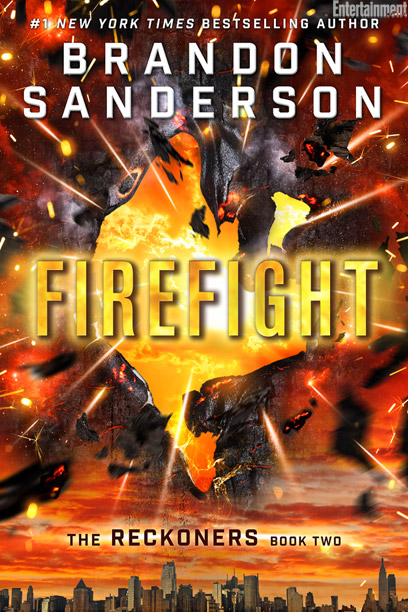The problem with reviewing sequels is the one has to allude to the first book — in this case, it’s Steelheart. One of my favourite fantasy authors imagines a world where power corrupts — in Steelheart, we roam around in a universe where super-powered people turn bad because of their powers, and try and rule over with an um, pardon the pun, an iron fist. They are called Epics, and they are incredibly dangerous and destructive.
Warning: This review contains spoilers. Read more below.The protagonist, David, has sworn to kill the Epic who goes by Steelheart, since the super-powered man killed his father. (This sounds vaguely like the backstory of Batman, I know.) He has this idea to join The Reckoners, who are made up of a group of people doing reconnaissance work to spy on Epics, but he manages to convince them to go with his plan to slay Steelheart. They do it and succeed.
The first book is amazing — I’m afraid that I’m not a very objective viewer as Sanderson is one of my favourite writers — Newcago is an immersive city, and in my head, it’s an even darker, duskier version of Gotham. With David, we work our way through the puzzles — we find out what each Epic’s weakness is, and think with him how we would subdue him. Or her. Like so many of his books, we pick up clues along the way, keep our eyes open for foreshadowing, and hope that we have guessed the secrets of these characters correctly. Suffice to say, Book Two didn’t disappoint.
In this book, an Epic by the name of Regalia has been sending Epics to Newcago, where David and The Rreckoners live. Although the Reckoners manage to kill them, the leader, Prof, thinks that they should head down to what used to be NYC to take down the Epic behind this. Little did they know that it was all a trap, and everyone in the team ends up re-evaluating their assumptions about Epics and themselves.
As usual, Sanderson’s ability to craft a universe is stellar, and this version of a dystopic NYC is full of puzzles that need to be solved. Why does the graffiti glow? How come people worship an Epic called Dawnslight, who has never been seen? Where is Dawnslight? And while we’re at it, where is Regalia? The Epic who lures them uses the surrounding water to create avatars of herself, and the team has to pinpoint them. In the meantime, members of the mafia are also getting powered up, and David is persuading Prof of a fellow team member’s innocence, who happens to be the girl of his dreams. All these elements keep the reader in suspense, and I’m always flipping the page to find out more.
The fast-paced narrative and action sequences are also fun to read, and David’s fish-out-of-water and awkwardness in socialising and fear of water make for good character growth. His inability to come up with metaphors also keeps the reader smirking, especially when moments are bleak.
Sanderson’s ability to find a logical explanation that unravels each and every puzzle is amazing to behold, and I always feel sad when I find out all the answers, as I know that the book is coming to a close.
However, I left the world feeling bereft, as though the book disappointed me on some level. Perhaps this was my fault as I’d kept comparing Firefight to Steelheart, and finding that the latter was better. However, books in a trilogy always have the same function — the first to build up a strong universe and to show the hero is place in the world, the second to expand the universe and show how the hero grows with his new station in life, and the last to conclude any remaining plot holes and to give the readers closure by resolving plot holes and character conflicts.
Firefight is a fast-paced action with well-thought-out plans, solid character building, and an intriguing resolution that will leave you wanting for more. I am excited to read Calamity, (the last book in the series) and am slightly sad that this saga will be over soon.
